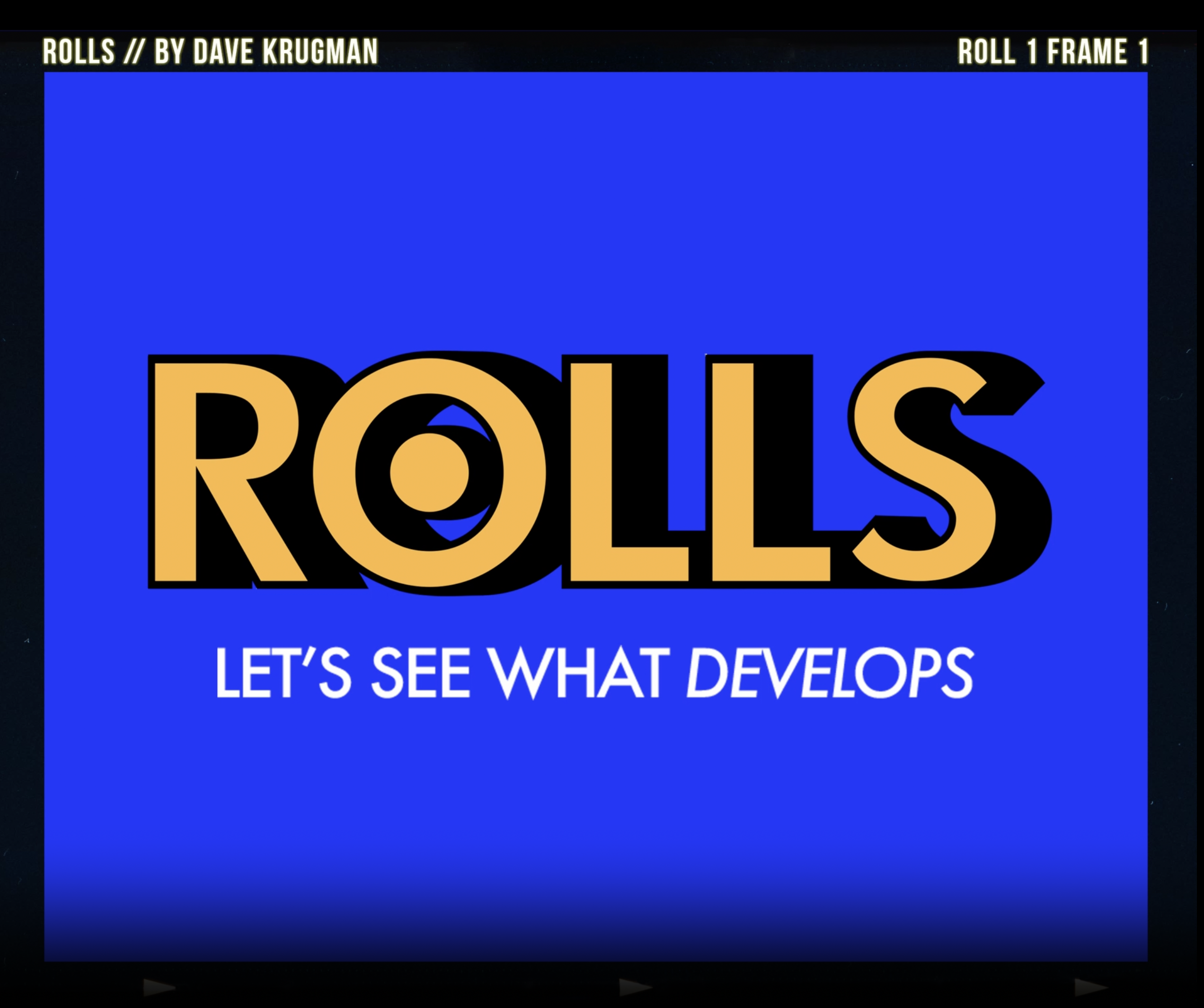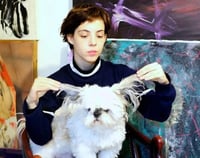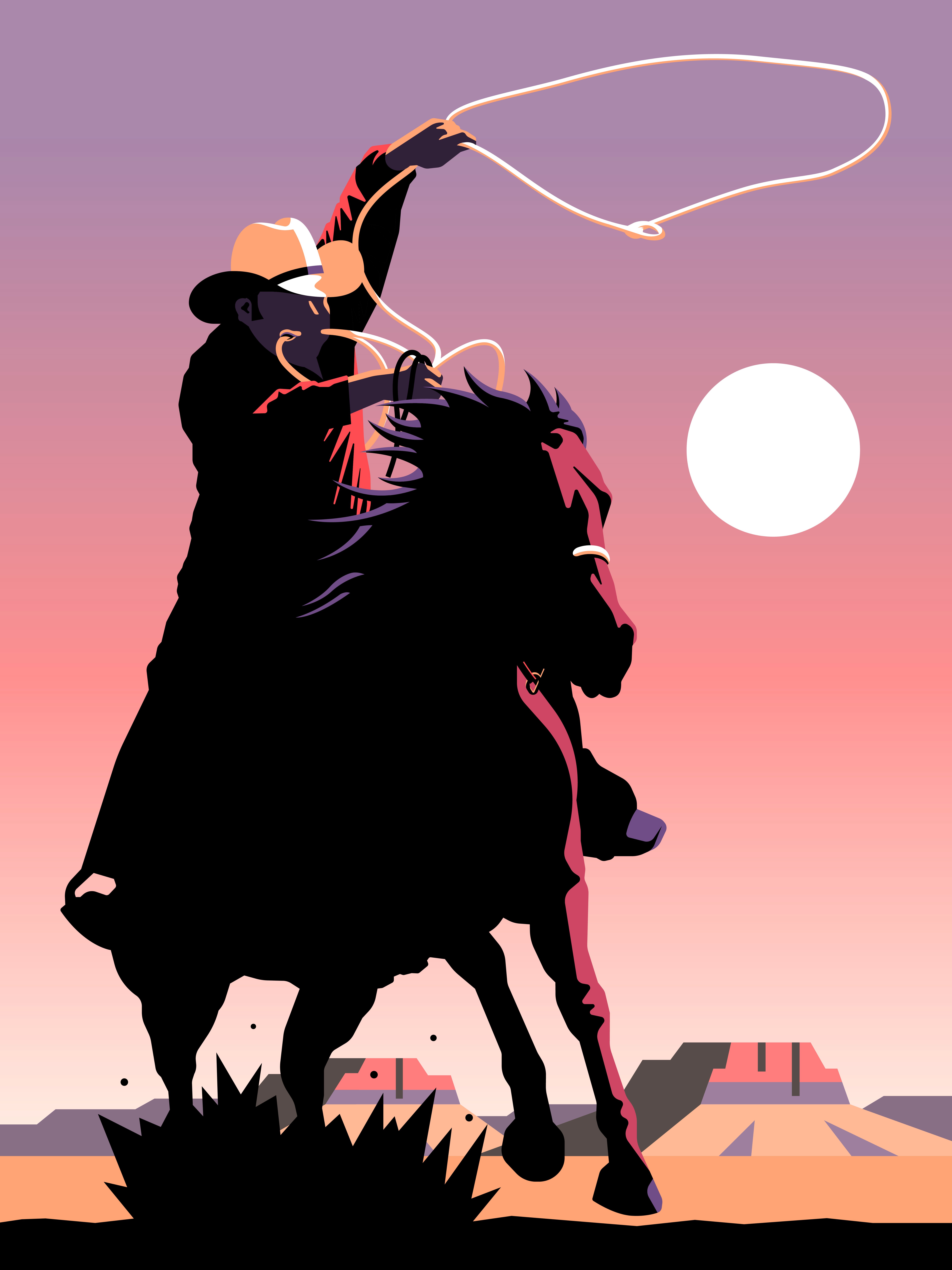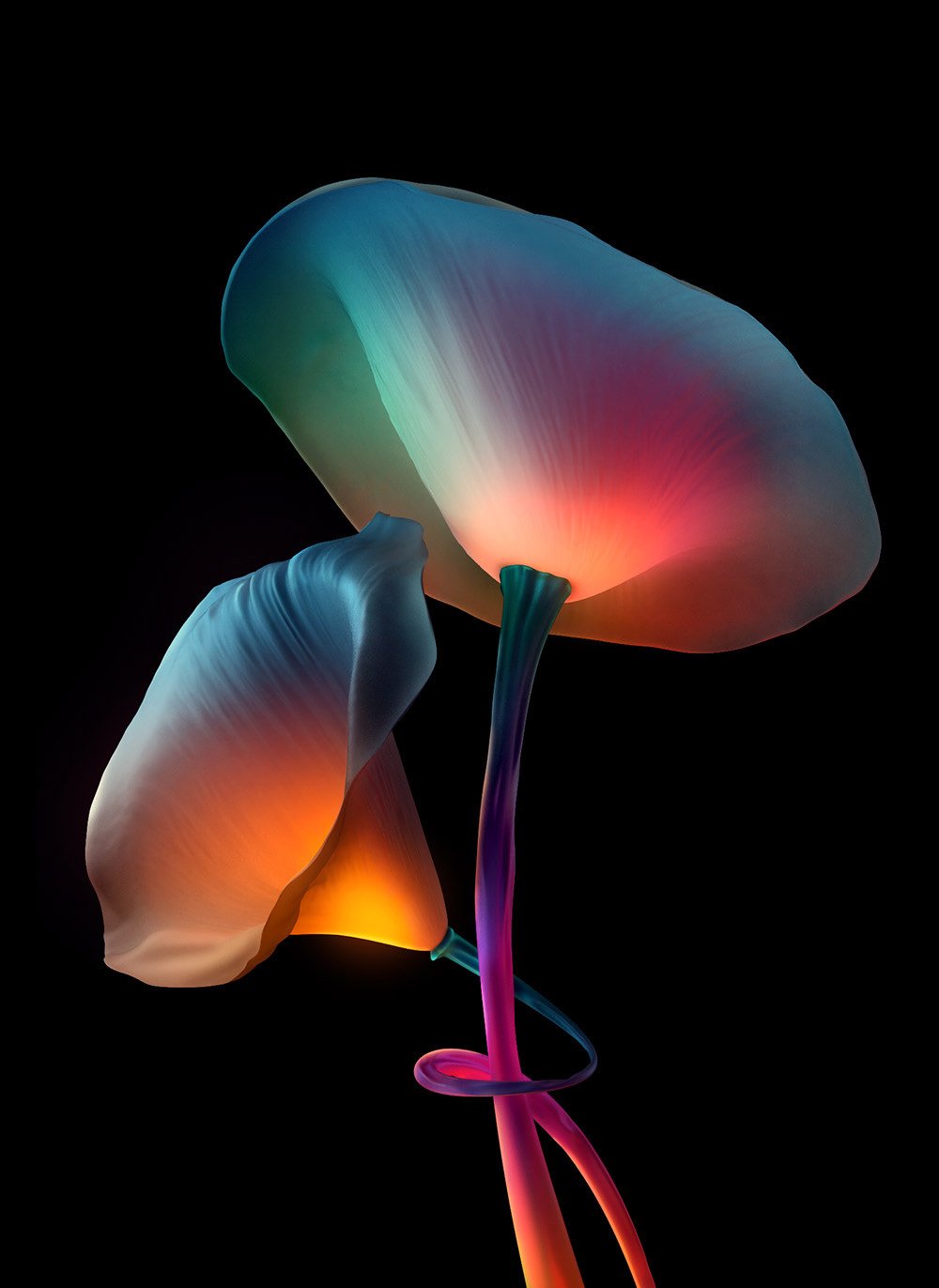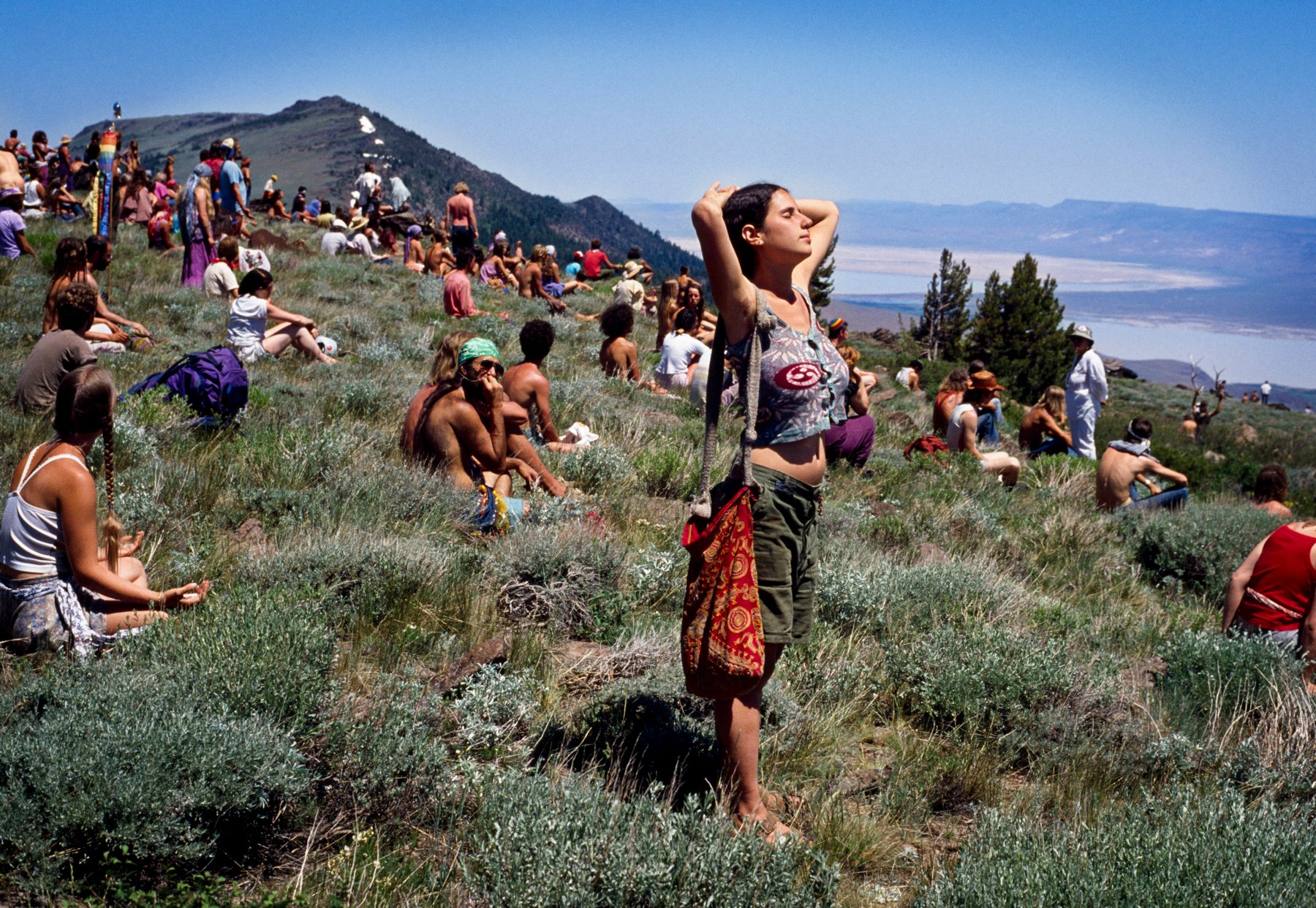Dave Krugman is a New York based photographer, cryptoartist, and writer, and is the founder of ALLSHIPS, a creative community based on the idea that a rising tide raises all ships. His photography is an ode to cyberpunk inspirations and he works to reveal the beauty at confluences of circumstance. He is fascinated by the endless possibilities that exist at the intersection of art and technology, and works in these layers to elevate artists and enable them to thrive in a creative career. As our world becomes exponentially more visual, he seeks to prove that there is tremendous value in embracing curiosity and new ideas. His Cryptoart projects include, ROLLS, DRIVE, Drip Drop, SPECTERS , Shades of Dusk, and SuperRare works.
SuperRare Labs Curator Mika Bar-On Nesher asks Dave Krugman about his background, his new project "ROLLS," and artists he finds inspiring in the Web3 space.
Mika Bar-On Nesher: Tell us about your background. How did you get into photography? What was the first camera you used?
Dave Krugman: For as long as I can remember, I've been fascinated by photography. Nothing I've encountered has felt closer to magic. One early experience that stands out to me is being at summer camp in a black and white film photography class. I'll never forget standing in the darkroom, basking in the red glow of the safelights, sliding the exposed paper into the developer bath and watching the silver molecules react and change, a picture perfect image emerging from nothing. I suppose a lot of my journey with photography has been chasing that same feeling. I'm endlessly amazed by the ability to study time, space, light and energy with these chemical and digital tools that we have at our disposal.
The first camera I ever shot with was a Nikon F1 film camera, and since then I've used all varieties of cameras in many different ways. Photography in my opinion has very little to do with what equipment you are using, and everything to do with how you see and frame the world around you. The fact that most people have a camera on them by default on their phone is one of the greatest things I can imagine happening — when you are able to participate in a craft, you gain a deeper appreciation for it. I think the appreciation for photography is at an all time high. There's never been a better time to be a photographer.

"Neo Noir New York: Silent Solitude" by Dave Krugman, 2022. |
— Dave Krugman |
MBON: How did you enter the NFT space, do you have any words of advice for emerging photographers?
DK: My friend JN Silva was the first person to tell me about NFTs, in the summer of 2020. It took me a few months to really wrap my head around it, and I first minted work in November 2020 on the platform Blockparty, created by Vlad Ginzberg. ROLLS is actually a return to my first steps in this space, as my very first mints were high resolution scans of medium format film, shot on my grandfather’s Hasselblad 503cx. I instinctively knew that my first mints should be meaningful — and I can't think of anything more meaningful than minting work created on a camera both my grandfather and father used. I'm the third generation using that camera, and to put that work on-chain meant codifying that fact forever. ROLLS is my next step in this multigenerational story of creating moments distilled from time.
MBON: Where do you see "ROLLS" going in the future?
DK: ROLLS is a lifelong project for me. This first iteration, ROLL 1, is ten tokens, each corresponding to one frame on this first roll of film. Over the course of my life, I plan to use this contract to mint more ROLLS. ROLL 2 will be tokens 11-21, ROLL 3 will be 22-32, and so on and so forth. I plan to take this process very slowly, building a body of work that is thoughtful and considered, playing with different mechanics and ideas that build upon the scaffolding of this contract. Imagine, for example, city-specific ROLLS, or ROLLS that are commissions, collaborations, or ROLLS to raise money for various causes I care about. What if someone could buy out a whole ROLL and send me to a favorite country to make 10 frames? ROLLS is a framework, a structure for deep ideas and philosophical experiments — both in the work I make and in the relationships I build with the people who collect these tokens and bet on me to create meaningful images.
MBON: Can you tell us how the contract behind "ROLLS" is designed? What was the process like?
DK: One of my favorite things about cryptoart is that the contracts are a canvas as well. These projects create executable data layers. Metadata, wallet addresses, functions of the code, interoperability — all of these various qualities can combine to create social sculptures. I'm an artist, not a coder, so fortunately I've been able to work with people much more suited to the task. For ROLLS, like many of my other projects, I've decided to work with the brilliant minds at Transient Labs. Ben and Marco are just brilliant, and they always take my crazy ideas and make them not only real, but also infinitely more interesting.
We are deploying a ERC-721TL, which was built in a mechanic called Synergy. As described by Ben Strauss,
"Synergy is the multi-sig metadata update protocol, requiring both an on-chain proposal for new metadata by the creator, and an on-chain accept/reject signature from the current collector. This is where the narrative of the collector “developing” the final photo comes into play.
As for the dynamic stages of the tokens, this is handled through dynamic metadata. So the metadata itself never has to be updated, but can dynamically evolve what visual is being displayed based on what images/videos you as the artist feed it.
So there are essentially three stages to ROLLS:
1. Dynamic stage where the metadata is an html file (dynamic art), and allows you to feed in new images/videos along the process
2. The final photo metadata update proposal that you push to each token
3. The on-chain “photo development”, where the collector permanently changes the metadata to the final image
Synergy is a Transient Labs mechanism to ensure collectors are protected against metadata changes. It is evident that metadata updates are needed in certain cases, although not that often. When needed, the feature is very useful, but could be abused and typically deters traditional art collectors.
To combat this, we have come up with a propose-commit scheme. In the event an update is needed, the creator proposes a metadata update. The collector can then visualize the change and approve or reject. Once approved, the metadata is updated, but only then.
The flow below shows Synergy at play."
BEN STRAUSS 
MBON: When we chatted briefly you mentioned your interest in the intersection between film technology and blockchain. Would you share with us a little about your experience from the frontier?
DK: I truly feel that there is an incredible relationship between chemical film photography and blockchain technology. They are both immutable time chains — that is, you can't go back in time and change the instances you've created. They are both essential record keeping technologies, who's truth and provenance are confirmed by a decentralized consensus. Film photography is even a proof-of-work mechanism, it requires you being present as an observer, working to capture the moment of course, but it also requires a chemical work load to solidify the state. I would go so far as to say that film photography is actually a primitive blockchain. One of the main goals of my project ROLLS is to explore and invite conversation and debate around this very idea. I love drawing comparisons between different layers of technology that span centuries. History has a way of repeating itself, and finding where they overlap can connect us to the legacy of all those who came before us. After all, we stand on the shoulders of giants, and we depend on those who experimented with the cutting edge technologies of their time. I want to participate in a multigenerational conversation about the intersection of art and technology.
MBON: When encountering your work, what do you wish to show the viewers?
DK: I want people who view my work to feel transported. Through the aesthetic I create and the ways I use technology to tell stories about the world we live in, I want to show people that if you slow down, observe the intricate overlaps and confluences of circumstance, a fractal infinity of beauty and depth will unfold before you. I also want to prove to the next generation of artists that a creative life is possible if you are willing to embrace technological shifts and take risks. Lastly, I want to be a bridge between the people I learned from and the people learning from me.
 "Neo Noir Tokyo: Phosphorescence" by Dave Krugman, 2022.
"Neo Noir Tokyo: Phosphorescence" by Dave Krugman, 2022.
MBON: Who are some artists in the space you find are doing innovative work? How did you discover their work?
DK: There are simply too many inspirations to name, which is why I created my creative community ALLSHIPS. Whenever I find someone who I find inspiring, I write them a message and ask to have a deep conversation. I turn these conversations into articles to contextualize the work they make, and to slow down so we can learn about them outside the circadian cycles of social media. I've personally written over 100 articles about artists in this space, all on my platform that is entirely self funded through sales of my own art. I'm working to create a symbiosis, a self-sustaining micro economy of artists who believe in abundance mentality and systems of mutual support and assistance. It's a lofty goal of course, but one that I will be working towards for the rest of my life. So if you want to know who I think is doing the most innovative work, take a scroll through ALLSHIPS.
In terms of innovation on the technology side, I can say from personal experience and from talking to other artists that Transient Labs is on the bleeding edge of innovation. It's why I'm so incredibly grateful that a project as important to me as ROLLS is in their capable hands.
I truly feel that ROLLS will help mint my photographic legacy to the blockchain, and I couldn't be more excited to see who fights for these first 10 tokens. I have a plethora of interesting ideas that will grow from these first seeds, and I cannot wait to get started and share these ideas with the world. To the reader, I'd love to connect with you personally, the best way to find what I'm working on is to check out my Linktree and add me across various platforms.
